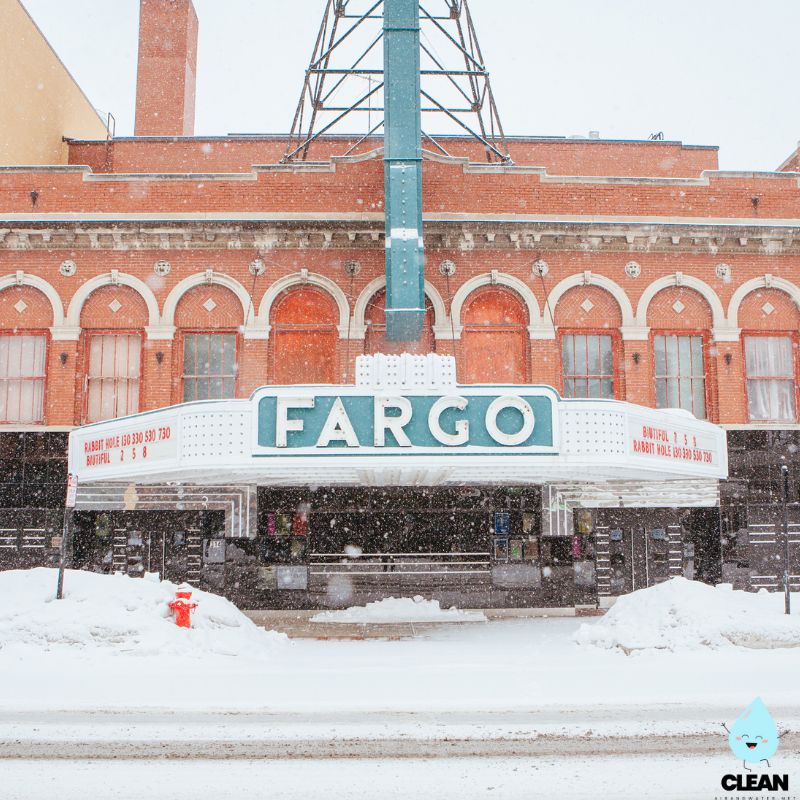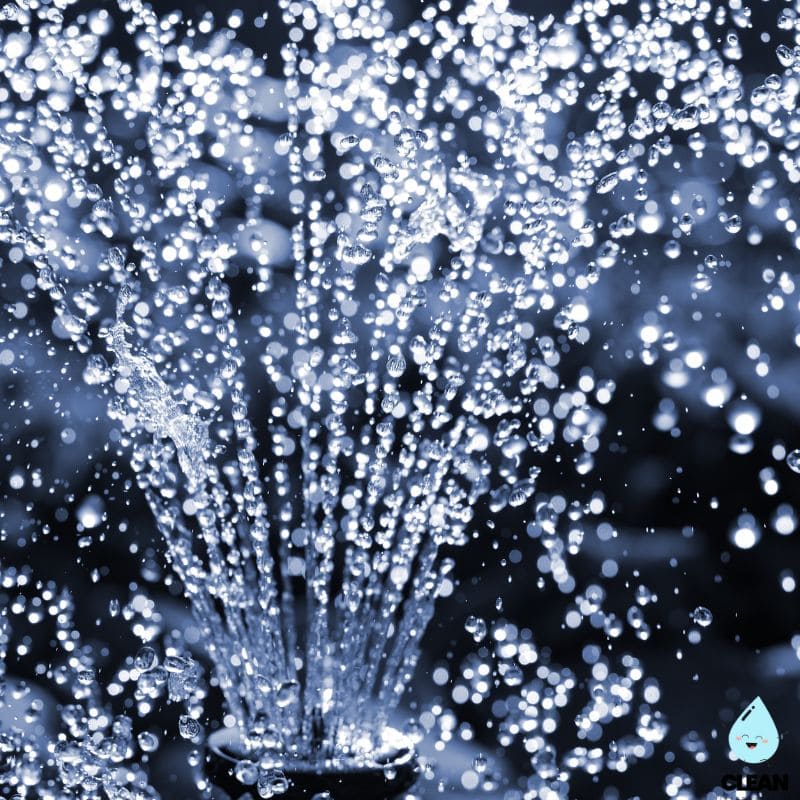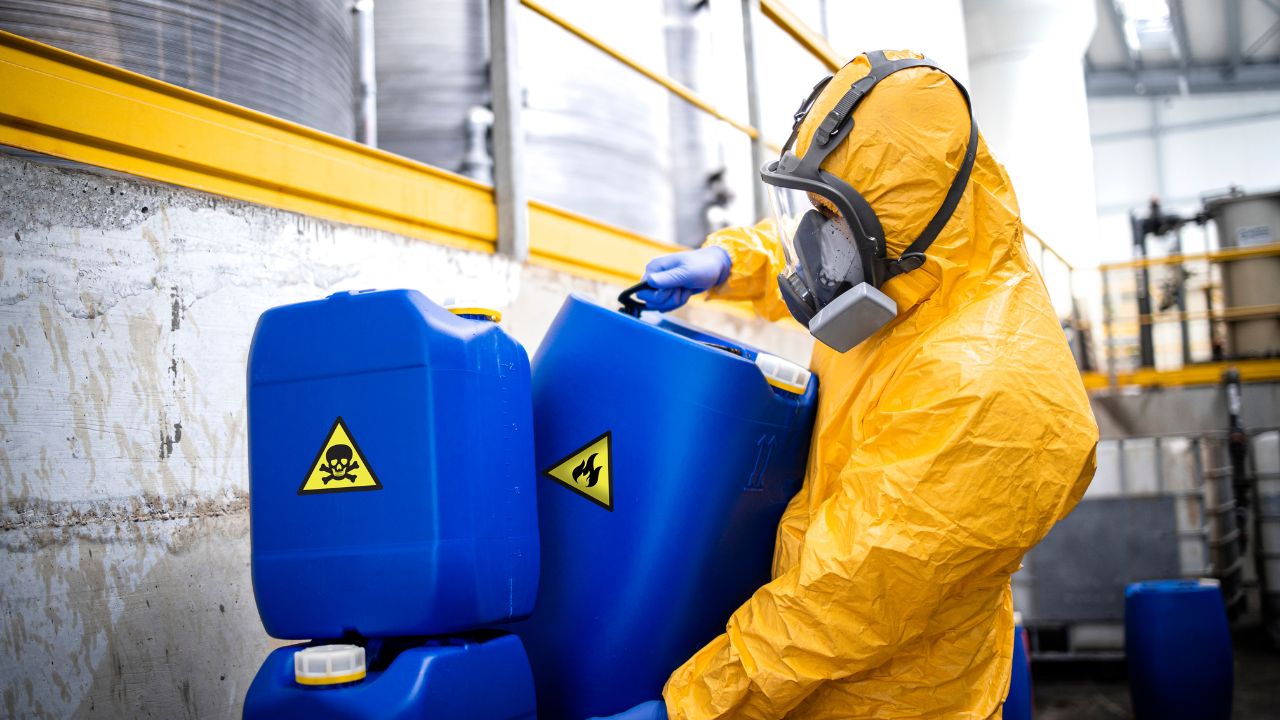Fargo Water Quality at a Glance
minor concerns
Is Fargo Water Safe to Drink?
Yes, Generally Safe – Fargo water meets all federal standards and won 2nd place nationally for taste in 2024. The water is thoroughly treated using advanced membrane technology. Minor concerns include disinfection byproducts like bromate (up to 9.1 ppb) and trihalomethanes. Fargo sources water from Red River and Sheyenne River, with Lake Ashtabula as backup.
⚠️ Key Considerations for Fargo Residents
- Disinfection Byproducts: Bromate levels up to 9.1 ppb and trihalomethanes detected (below EPA limits)
- Lead Service Lines: Lead service line replacement program beginning summer 2025
- Water Hardness: Hard water at 120 ppm (7 grains/gallon) – consider softening
- PFAS Monitoring: No PFAS detected in public systems, ongoing monitoring continues
Read the full report below for detailed analysis, testing data, and specific recommendations for Fargo residents.
Fargo – North Dakota – Water Quality Report 2025: PFAS Testing, Infrastructure Concerns & Safety across your city
The City of Fargo provides comprehensive water services to approximately 125,000 residents across the greater Fargo metropolitan area, including serving West Fargo and several surrounding communities through its advanced water treatment infrastructure. Established as a municipal utility in 1890, the system includes over 500 miles of water distribution lines, state-of-the-art treatment facilities, and pumping stations that deliver an average of 8-10 million gallons of drinking water daily in winter and 15-16 million gallons daily in summer to North Dakota’s largest city and surrounding areas.
Fargo sources its drinking water primarily from the Red River of the North, with the Sheyenne River and Lake Ashtabula serving as backup sources for supply redundancy and drought protection. Water from both rivers is treated at two cutting-edge facilities: the Fargo Water Filtration Plant with a 30 million gallon per day capacity and the award-winning Membrane Water Treatment Plant that utilizes advanced ultrafiltration and reverse osmosis membranes. Fargo’s water consistently meets all federal and state quality standards and won 2nd place nationally for best-tasting drinking water in 2024, though the utility faces ongoing challenges with disinfection byproducts, lead service line replacement, and protecting water sources from agricultural runoff in the Red River Valley.

Fargo Water Quality: Current Status (2024-2025)
Latest Testing Results
- Lead and Copper Monitoring: Fargo Water continues to maintain full compliance with EPA Lead and Copper Rule, with no sample sites testing above action levels during 2023 testing. The next regulatory sampling is scheduled for 2026.
- Compliance Status: For the latest quarter assessed by the U.S. EPA (April 2024 – June 2024), tap water provided by Fargo’s water utility was in compliance with all federal and state drinking water standards.
- Water Quality Recognition: Fargo’s water treatment plant won the prestigious “Membrane Facility of the Year” award in 2024, and the city won 2nd place nationally for best-tasting drinking water at the American Water Works Association competition in 2024.
Water Sources
- Red River of the North: Primary source with intake located near the Midtown Dam, providing the majority of Fargo’s water supply through a sophisticated intake and pump station system.
- Sheyenne River: Secondary source with intake and pumping station located between West Fargo and Horace, connected via a 9-mile pipeline. A small pump provides continuous 1 million gallon per day flow to maintain pipeline freshness.
- Lake Ashtabula: Emergency backup source owned 52% by Fargo through investment in Baldhill Dam construction, providing approximately a 2-year water supply during severe drought conditions, historically used during dry years of 1976, 1984, and 1988.
Advanced Treatment Technology
- Fargo Water Filtration Plant: Capable of filtering and distributing up to 30 million gallons of water per day, utilizing conventional treatment processes including lime softening, filtration, and disinfection.
- Membrane Water Treatment Plant: Award-winning facility featuring cutting-edge ultrafiltration membranes and reverse osmosis technology, with advanced monitoring systems and optimized chemical usage for treating challenging source waters.
- Water Softening Focus: Both treatment facilities center around softening the naturally hard water from the Red River and Sheyenne River, delivering water with total hardness of 120 ppm (7 grains/gallon) to residents.
Infrastructure Development
- Regional Collaboration: Fargo serves as the water supplier for West Fargo and other surrounding communities through the same treatment facilities and distribution system, ensuring consistent quality across the metro area.
- New Water Tower: Fargo’s new 2.5 million gallon water tower at 7th Avenue North and 11th Avenue North is the largest in North Dakota, replacing three aging towers scheduled for removal in summer 2025.
- Lead Service Line Replacement: Lead Service Line Replacement Program beginning summer 2025, utilizing state and federal funding with no added costs to property owners who complete required water sampling.
Water Quality Assurance
Fargo Water operates under extensive federal oversight through the Safe Drinking Water Act and maintains comprehensive testing programs to ensure water quality throughout the distribution system. The utility’s treatment processes are specifically designed to address the challenging characteristics of Red River source water, including natural hardness and seasonal variations. Fargo’s commitment to water quality excellence is demonstrated through its award-winning membrane technology, transparent reporting through annual water quality reports, and its recognition for exceptional taste at the national level. The city continues to monitor emerging contaminants and invest in advanced treatment technologies to maintain the highest standards for safe, reliable drinking water while preparing for future challenges including population growth, climate variability, and evolving water quality regulations.
Recommendations for Fargo Residents

Monitor Lead Service Lines
Contact Fargo Water Treatment at 701-241-1469 if you receive notification about potential lead service lines. The utility is launching a Lead Service Line Replacement Program in summer 2025 with no cost to property owners who complete required water sampling.

Follow Drought Management Guidelines
Stay informed about Fargo’s Drought Management Plan, which monitors water flow, river levels, and precipitation. Current drought status and any water use restrictions are available at FargoND.gov/DroughtPlan.

Consider Water Filtration
While Fargo’s water meets all standards and wins taste awards, homes concerned about disinfection byproducts like bromate or hard water minerals may benefit from NSF-certified filters designed for treated municipal water systems.

Stay Informed About Water Quality
Review Fargo’s annual Water Quality Report available at FargoND.gov for detailed testing results and compliance information. The 2024 report shows compliance with all federal standards and provides transparency on water treatment processes.

Report Water Issues
Contact Fargo Water Treatment Plant at 701-241-1469 for water service issues, quality concerns, or questions about water testing. For water emergencies including broken mains or service disruptions, this number provides 24/7 emergency response.
Frequently Asked Questions
Is Fargo’s tap water safe to drink?
Yes, Fargo’s tap water meets all federal and state drinking water standards and won 2nd place nationally for best-tasting drinking water in 2024. The city operates two state-of-the-art treatment facilities that process water from the Red River and Sheyenne River.
Fargo’s water treatment system incorporates multiple barrier approaches including conventional treatment at the main plant and advanced membrane technology at the award-winning Membrane Water Treatment Plant. The utility maintains compliance with all EPA regulations and conducts extensive testing throughout the distribution system. Water quality is consistently monitored and reported through annual water quality reports available to all customers at FargoND.gov.
Why is Fargo’s water hard?
Despite extensive treatment, Fargo’s water maintains a total hardness of 120 ppm (7 grains/gallon) due to the mineral content of Red River source water:
1. Source water characteristics: Red River water contains naturally occurring minerals from the surrounding geology
2. Lime softening process: The main treatment plant uses lime softening to reduce hardness from much higher levels to the current 120 ppm
3. Membrane technology: The Membrane Water Treatment Plant uses reverse osmosis and ultrafiltration to further treat water while balancing mineral content
This balanced approach provides treated water that maintains some beneficial minerals while achieving excellent taste quality that earned Fargo national recognition in 2024.
Are there lead service lines in Fargo?
Fargo is actively addressing lead service lines through a comprehensive replacement program:
• Service line inventory: The utility has completed a service line inventory documenting lead, galvanized requiring replacement (GRR), and unknown material lines throughout the system
• Replacement program: Beginning summer 2025, Fargo will replace lead service lines using state and federal funding with no cost to property owners who complete required water sampling
• Current compliance: During 2023 testing, no sample sites tested above EPA action levels for lead, with the 90th percentile at 2.34 ppb (well below the 15 ppb action level)
• Corrosion control: Fargo’s water treatment includes orthophosphate addition and pH adjustment to prevent lead leaching from service lines and household plumbing
Does Fargo have water use restrictions?
Fargo operates under a comprehensive Drought Management Plan with different phases based on water supply conditions:
Normal Conditions (Current Status):
• No mandatory restrictions when water supply is adequate from Red River and Sheyenne River sources
• Voluntary conservation measures encouraged during peak summer demand periods
• Efficient irrigation practices promoted to reduce waste
Drought Response Phases:
• Advisory Phase: Voluntary conservation measures and public education about drought conditions
• Emergency Phases: Mandatory restrictions on outdoor water use, lawn watering, and non-essential uses
Current drought status and any active restrictions are available at FargoND.gov/DroughtPlan or by calling 701-241-1469.
Quality News About Your Water
Get the comprehensive water quality news coverage you need with our dedicated US Water News Service. From coast to coast, we deliver in-depth reporting and expert analysis on PFAS contamination, EPA regulatory changes, infrastructure developments, and emerging water safety issues affecting communities nationwide. While mainstream media only covers the biggest stories, we provide the detailed, ongoing coverage that helps you understand the full scope of America’s water challenges. Whether you’re a concerned citizen, water professional, or community leader, our daily updates and analytical insights keep you informed about the issues that matter most to public health and environmental safety.
Contaminants of Concern

Disinfection Byproducts
Source: Formed when disinfectants such as chlorine or ozone react with naturally occurring organic matter in Red River and Sheyenne River source waters; includes trihalomethanes (TTHMs) and haloacetic acids (HAA5), plus bromate from ozonation
Health Effects: Long-term exposure to elevated levels may increase risk of certain cancers and potentially affect liver, kidney, and reproductive health; bromate exposure may cause kidney effects and has caused cancer in laboratory animals
Current Status: Bromate detected up to 9.1 ppb (below EPA limit of 10 ppb), TTHMs up to 18.05 ppb (below EPA limit of 80 ppb), and HAA5 up to 10.48 ppb (below EPA limit of 60 ppb). Fargo’s advanced treatment processes help minimize formation while maintaining disinfection effectiveness.

PFAS Compounds
Source: Per- and polyfluoroalkyl substances potentially from firefighting foam contamination at nearby Hector International Airport, Grand Forks Air Force Base, and other North Dakota military sites, plus industrial sources and agricultural runoff
Health Effects: Research suggests potential links to cancer, thyroid disease, weakened immunity, liver problems, and reproductive issues; called “forever chemicals” because they persist in the environment and human body indefinitely
Current Status: No PFAS contamination detected in Fargo’s public water systems according to North Dakota Department of Environmental Quality monitoring. No North Dakota public water systems currently exceed EPA health advisory levels or the new federal PFAS regulations finalized in 2024.
Please read – our information
The information presented on cleanairandwater.net is compiled from official water quality reports, trusted news sources, government websites, and public health resources. While we strive for accuracy and thoroughness in our presentations, we are not scientists, engineers, or qualified water quality professionals.
Our mission is to present water quality information in an accessible, real-world format that helps people understand what’s in their water and make informed decisions about their health and safety. We believe that complex environmental information should be available to everyone in a format that’s easy to understand.
We make every effort to ensure our content is current and accurate, but we cannot guarantee that all information is complete or error-free. This website should not replace official communications from your local water utility or health department. We always recommend consulting official sources for the most up-to-date information regarding your specific water system.
Clean Air and Water is not liable for any unintentional errors, omissions, or outdated information. The content on this site is provided for informational purposes only and should not be considered professional advice.


